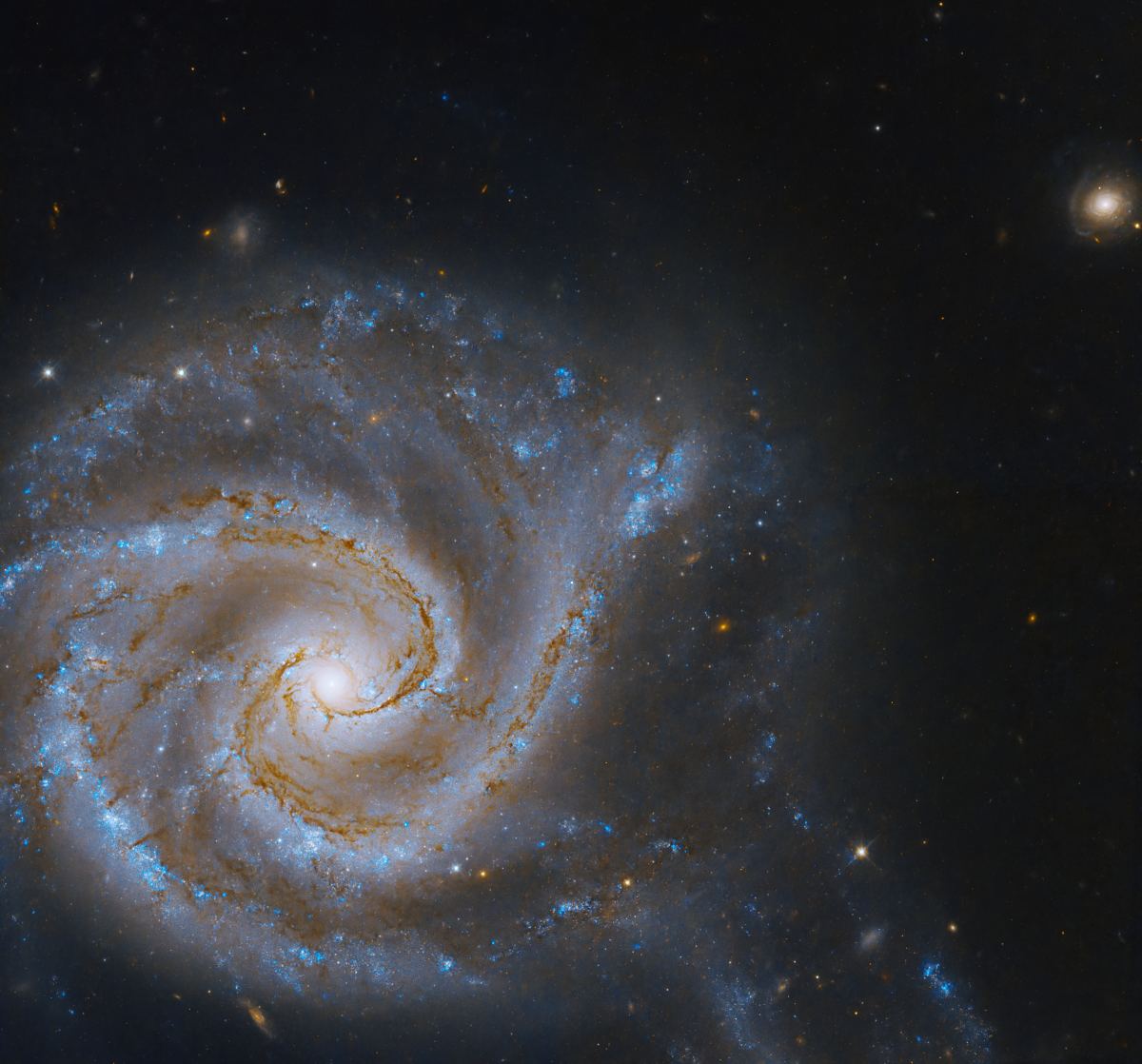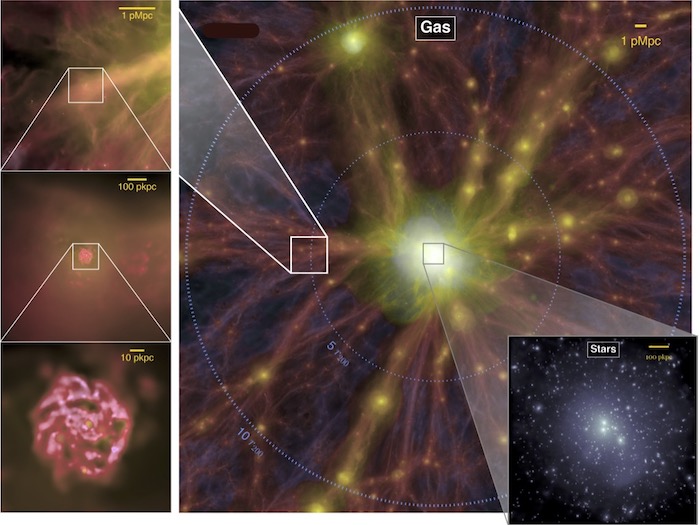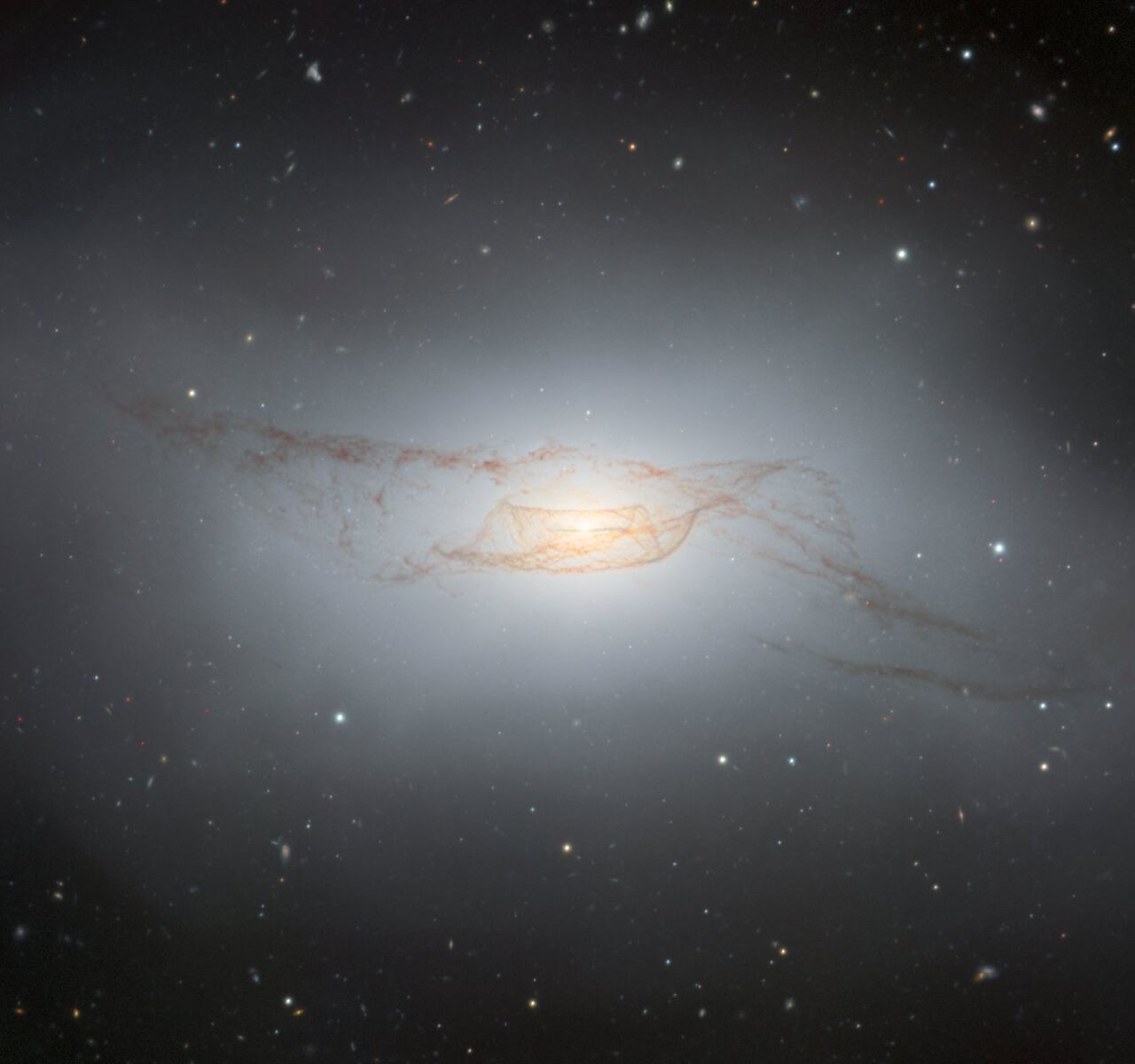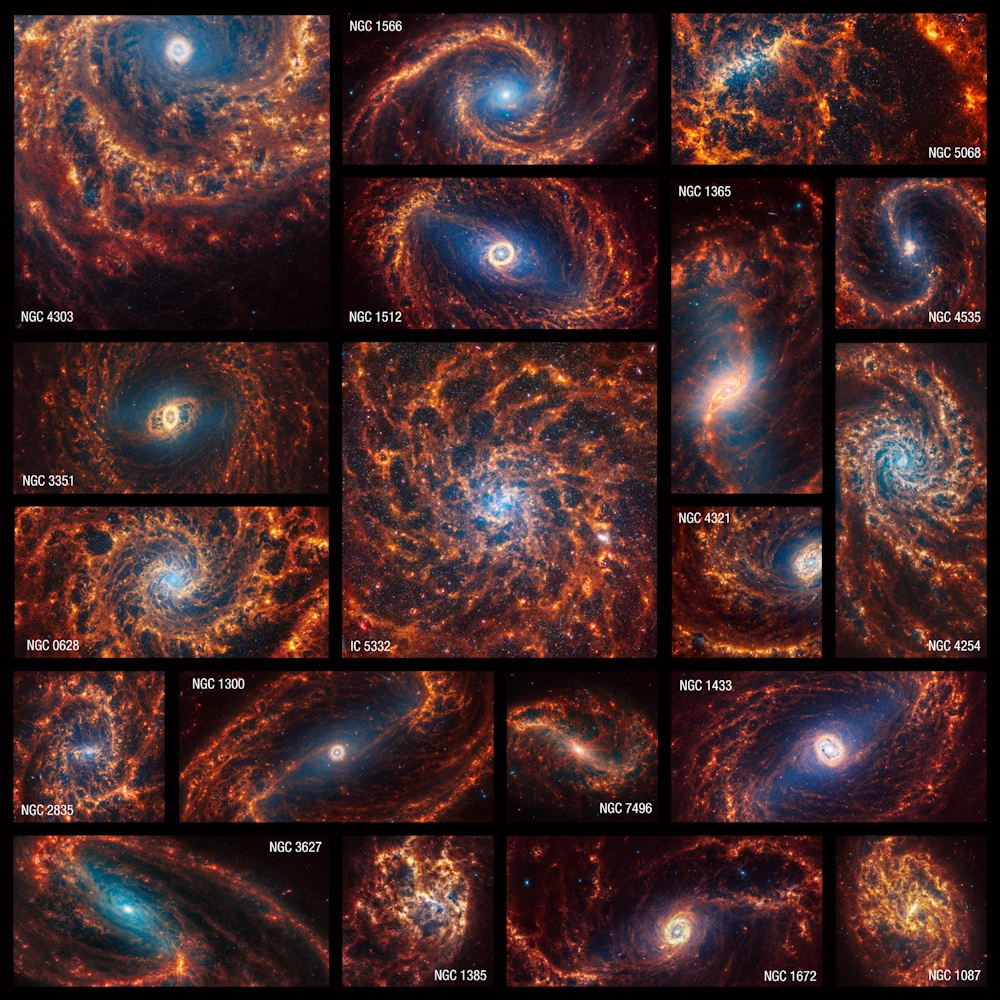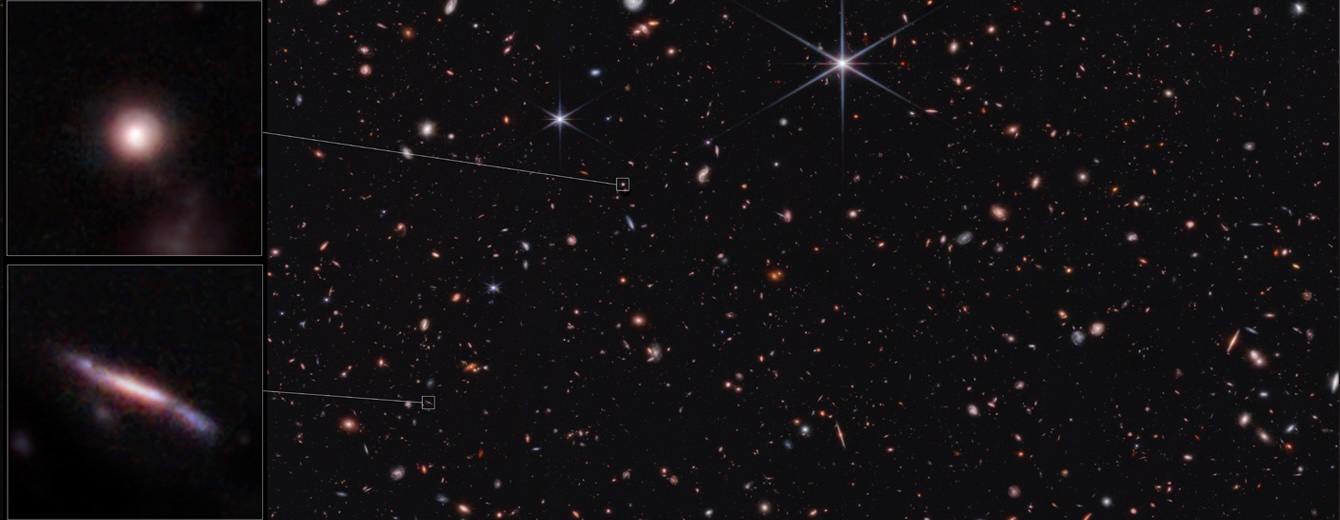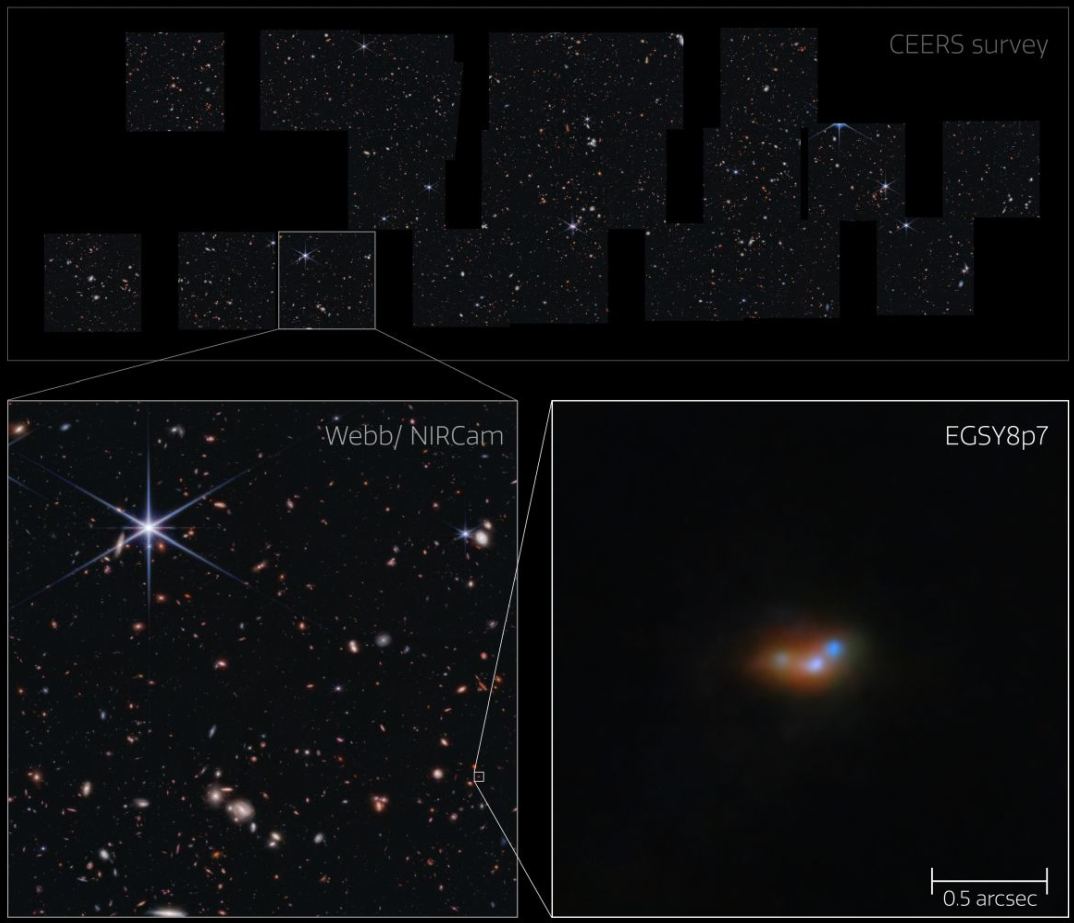This strange-looking galaxy seems to be a spiral with a long tidal tail stretching away. It’s known as Arp 122, and it’s actually not just one galaxy, but two separate galaxies. NGC 6040 is the warped spiral galaxy seen edge-on, while LEDA 59642 is the round, face-on spiral. The two are colliding about 540 million light-years from Earth, and it gives us a preview of the Milky Way’s future collision with Andromeda.
This image was taken by the venerable Hubble Space Telescope
What will Arp 122 look like when the merger is complete? We’ll try to keep you posted, but this ongoing merger will take hundreds of millions of years, so be patient.
Continue reading “This Strange-Looking Galaxy is Actually Two. And They're Merging”
